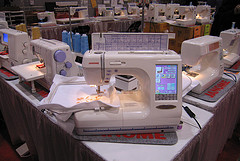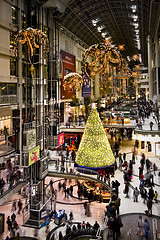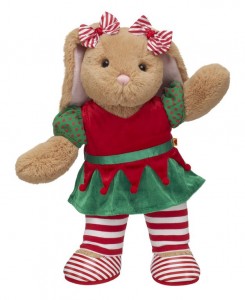From Pinkberry to build a bear there are plentiful examples of companies that offer point of sale production. Point of sale production, or POSP, is the creation of a final production right where someone wants it. Starbucks does this with coffee offering up a unique drink that is hand crafted as soon as you tell the barista what you would like. Popular yogurt shops, like Pinkberry or Red Mango, offer consumers the ability to customize their desert through both self serve and specified orders. In food service this is of course common, short order delis have been doing it for years, and though it can be very costly to stock such a variety of ingredients they continue to make this business work. More interestingly though businesses are being built around actual on site production of traditional CPGs (Consumer Packaged Goods).
It is no secret that many packaged goods are now made in China or other low cost countries and exported around the world for sale in malls, retail mega stores, and boutique shops. With POSP the factory floor can be brought directly to the customer. A famous example of this is build a bear, the popular toy shop that allows a child to customize and accessorize a bear before attaching it to a stuffing machine and bringing it to life. The Build A Bear stuffing machines are the same as those that are found on factory floors all over china (okay, not entirely, they are updated with a nice coat of paint and soft edges that make it acceptable for a mall kiosk). Even if Build-A-Bear hasn’t totally nailed the business model it is clear that there is a demand for the experience and the ability to make your own product.
Kinkos stores are another great example of POSP. It’s possible to create hundreds of bound publications in a matter of minutes. Gutenberg would claim used to be impossible but new machinery made it possible. With the addition of 3D Printers and other manufacturing tools the variety of products available goes far beyond standard spiral bound books and flyers. Home depot can now replicate a key in aisle with a CNC machine while pet stores commonly have a laser etching machine near the checkout that can customize a dog tag for our furry friends. A number of jewelers use cad software during consultations to customize a setting and design for rings. Jewelry takes longer to fabricate to it’s final form but the first model can easily be output on a 3D printer to show in person what the piece will look like, and this print can then be used to further cast and form the final design. As printers start to become faster, and more materials are mastered, it is conceivable that the final ring will be a print. But why stop at just jewelry? Many other products are great candidates to be custom ergonomic fit, color and style variations. I expect that the future of 3D printers is not necessarily in every home. The technology of additive manufacturing and rapid prototyping serves the needs of a relatively small group of customers. There is a nearly endless base for growth though if 3D printing manufacturers can package machinery with the location and product library to serve customers looking for traditionally packaged goods.
I can’t wait to see who the next big name in Point of Sale Production will be. Maybe in the coming holiday season less people will “shop” for a holiday gift and more will “create” a holiday gift, and I don’t mean baking a fruit cake.



